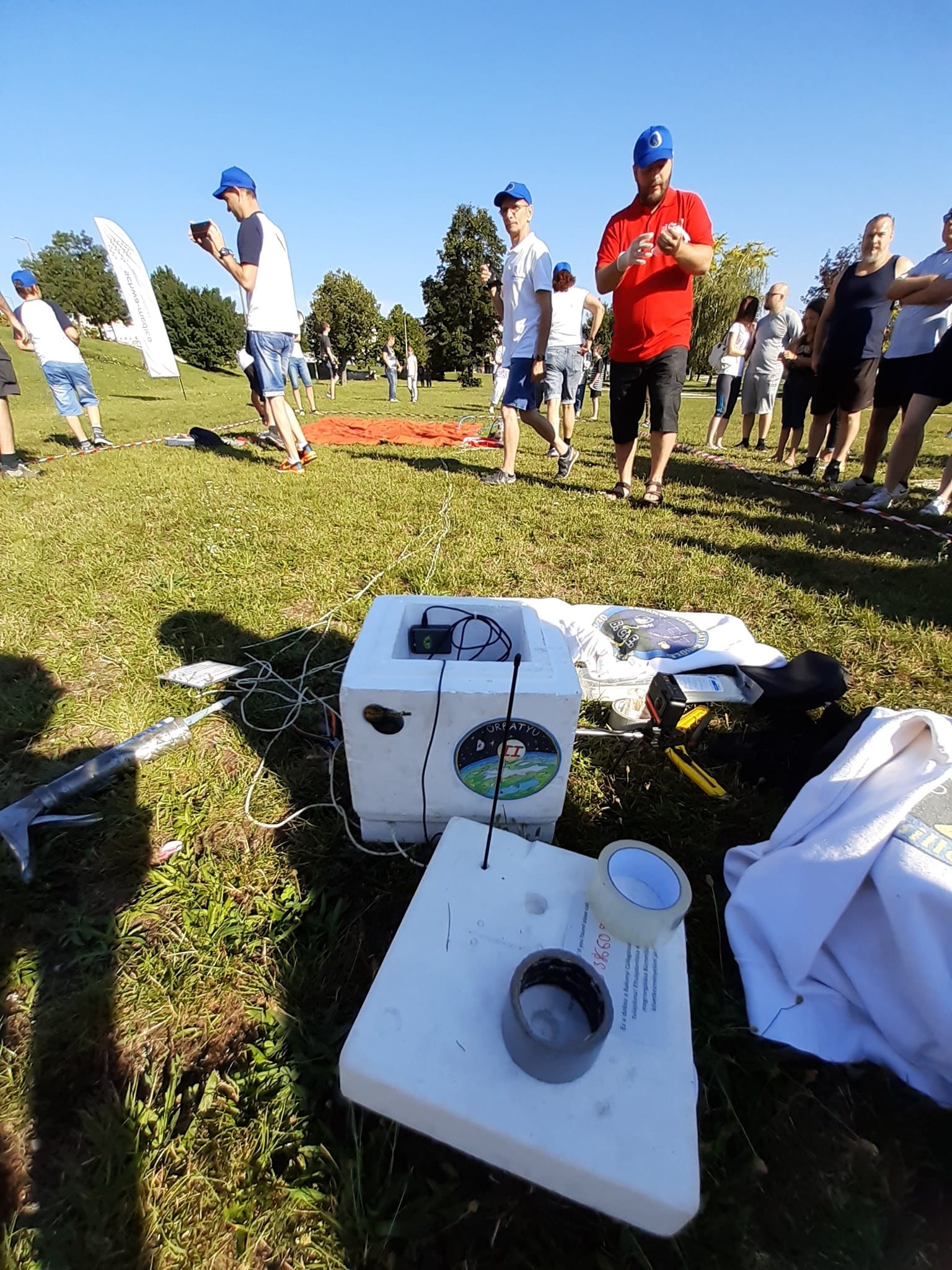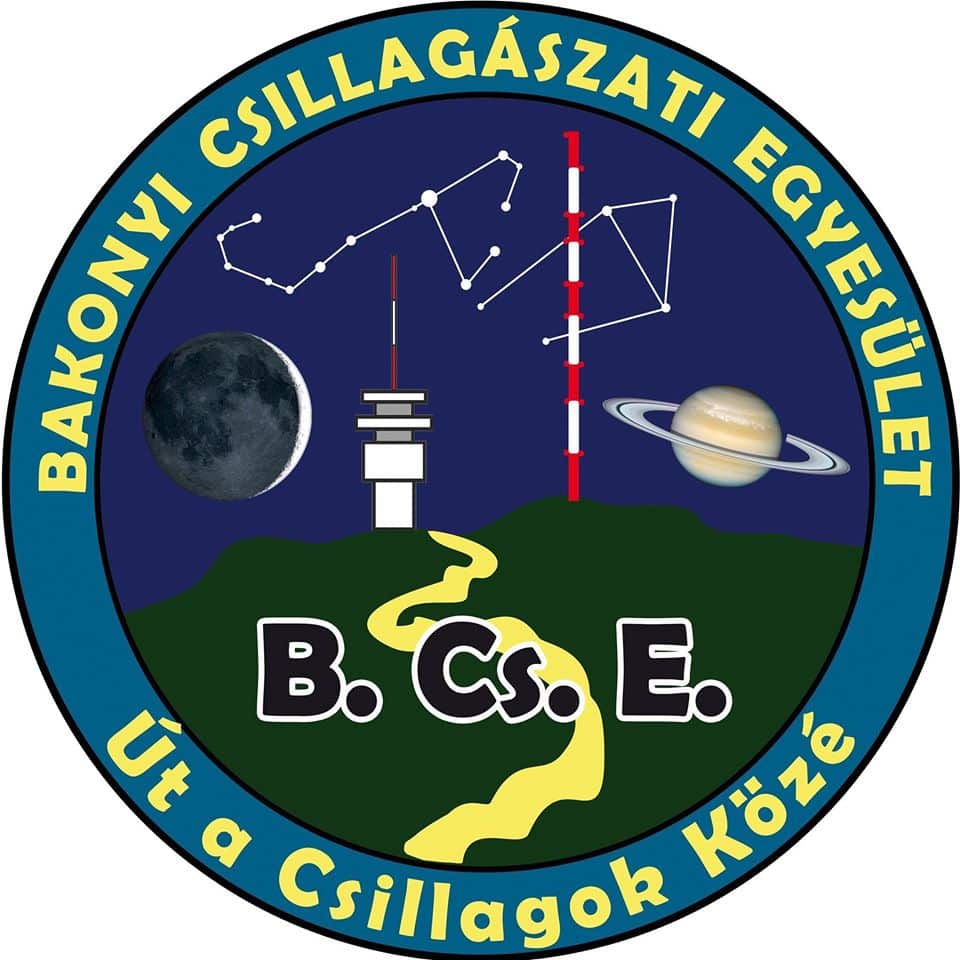Hints on the secretly planned Soviet manned lunar landings from the ‘sci-fi’ paintings of Alexei Leonov
Szerző: Vincze Miklós
Following last week’s sad news of Alexei Leonov‘s (1934-2019) death, I decided to scan and put online some of his paintings — joint works with Andrei Sokolov — published in the 1960s in a postcard series titled „Man in space” (человек в космосе). While taking a fresh look at these remarkable artworks, treasures of my little space collection, I discovered some quite amazing things in these paintings, that I now believe to be tiny hints on the planned mission profile of the top secret LK (лунный корабль) manned lunar lander; the pilot of which very likely could have been Leonov himself. Let’s see what these hints may be!
In the first picture, titled „On the Moon” the bottom section of a (probably four-legged) stylized lunar lander is shown with a circular window and a closed hatch, resting gently on the cratered lunar soil with distant hills and the Earth on the horizon.
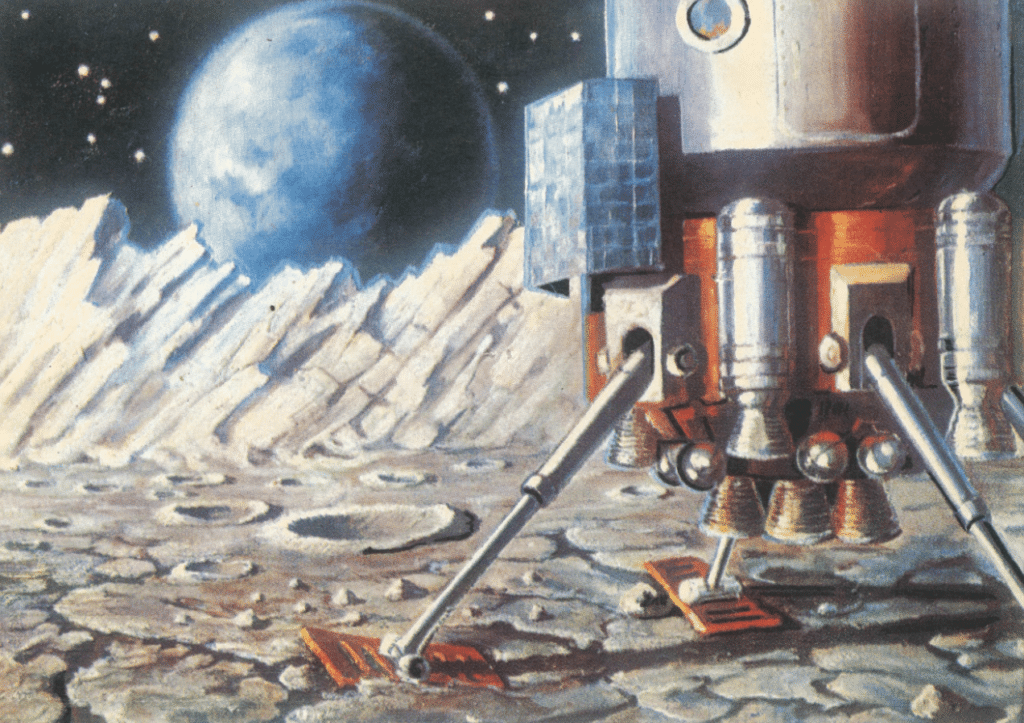
Mounted on the side of the spacecraft we can see some cylindrical structures, possibly external thrusters and spherical fuel tanks, pretty similar to those of the actual LK‘s landing compartment (see the images below). It is also clearly visible that, unlike on the Apollo lunar module that had a single descent engine, there is a pack of smaller nozzles at the bottom: just like in the case of the actual LK.

Left: the landing leg structure of the actual LK (source: Rick Barkley, facebook) Right: the landing/ascent engines of the LK (source: astronautix.com)
Now comes the fun part! The next painting bears the title „Start from the Moon’s surface„, and is showing a spacecraft with engines on, far above the lunar surface. The careful comparison with the previous (and also, with the next) painting reveals that this is probably the „ascent stage” of the very same lunar spacecraft that we saw earlier „on the Moon„.

Comparing the shapes of the ships in the two paintings, and assuming that they are in fact represent the same spacecraft, we can conclude that since this ascent stage has a truncated conical engine section extending way below the bottom of its hatch, the nozzles we see here running are the ones from the previous postcard. What is, therefore, left on the Moon, is nothing more than the landing leg structure (that serves as a launch pad), including the aforementioned cylindrical and spherical external nozzles and tanks. As we know now, this is precisely the way things would have worked out for the LK flight, as sketched below. Needless to say, that setting is nowhere near trivial: the Apollo LMs had a separate engine for the ascent stage, and one for the (bottom) descent stage that was left on the Moon.
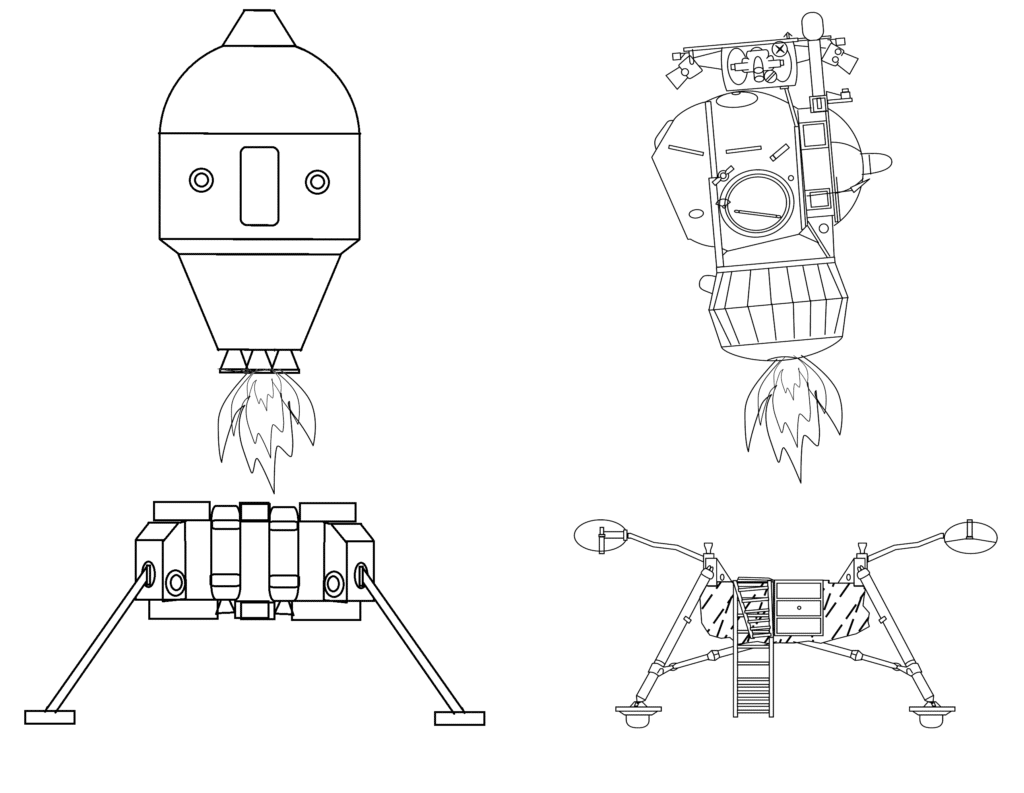
(Source: NASA)
The third picture, titled „Start toward Earth” was the most puzzling one to me. What we can see here is the same spacecraft in lunar orbit, with the hatch opened and a loose cable of some sort „hanging” out of it, while another stylized spacecraft is firing its engine in the background, apparently, as the title indicates, performing a „Trans-Earth Injection” (in Apollo terminology), leaving the lunar ascent vehicle behind. What is happening here?

After half a century (and the fall of the Soviet Union) we now know that taking off from the Moon, the LK ascent stage should have performed a rendezvous in Lunar orbit — Apollo style — with the LOK spacecraft (a Soyuz variant). However, after the rendezvous and/or docking, very much unlike in a nominal Apollo mission, the single cosmonaut of the LK would have performed an EVA (spacewalk) from the lunar lander to the Soyuz, as there was no pressurized tunnel designed between the two ships, probably as a weight-saving measure. In an interview in the late 1990s, Leonov referred to this approach as „the sporty way„. It is to be noted that in case of problems with the docking hatch, the Apollo astronauts also had an emergency procedure to do precisely the same thing. This tethered EVA from one spaceship to another was actually tested during the Soyuz 4 and 5 docking mission in 1969 and should have been performed by Rusty Schweickart on Apollo 9 as well in the same year, had his motion sickness not interfered with the plans.
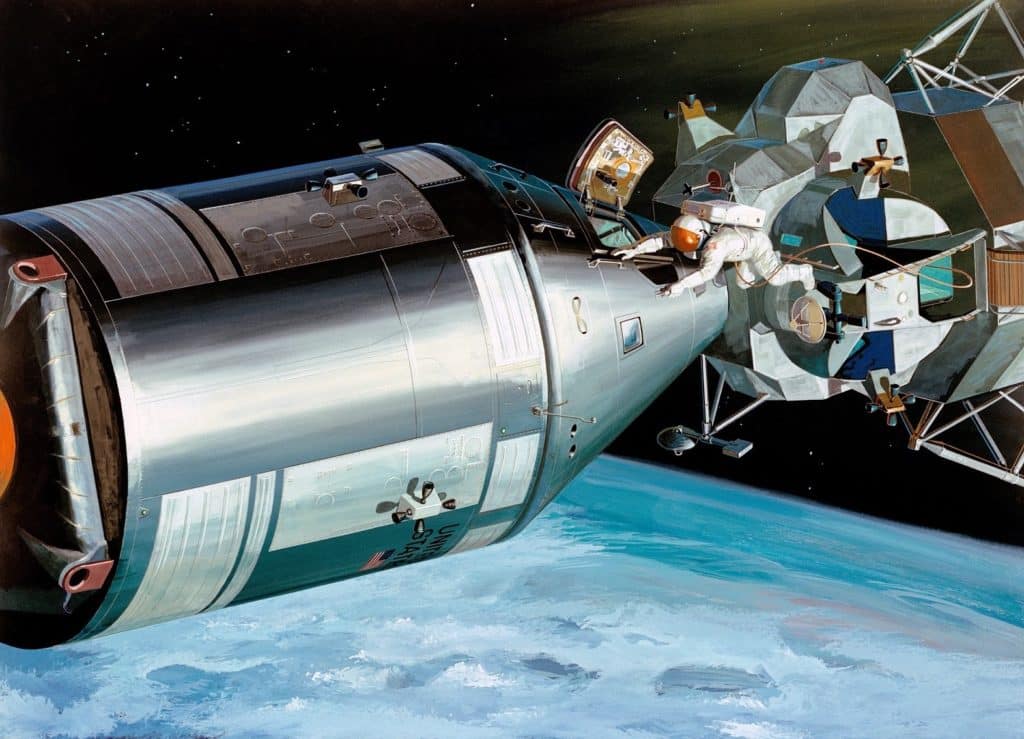
(source: North American Rockwell, Retro Space Images)
Knowing all this, I came to the conclusion that the „cable” in this painting is actually the safety tether that the cosmonaut (invisible in the paintings, despite the title of the series being „Man in space„) used during the EVA from the lunar lander to the other craft. After getting in there, he disconnected himself from the tether, and headed home, leaving the lander’s ascent stage and the tether behind.
It is fun to realize that although these paintings were publicly released in the 1960s, westerners (or actually anyone, outside the top ranks of the secret soviet manned lunar program) could not interpret them correctly, or maybe did not even try, as these were merely regarded as sci-fi works. Now it seems that they are slightly stylized, but conceptually accurate depictions of the planned soviet lunar landing — from the paintbrush of the very person who could have been on board.

